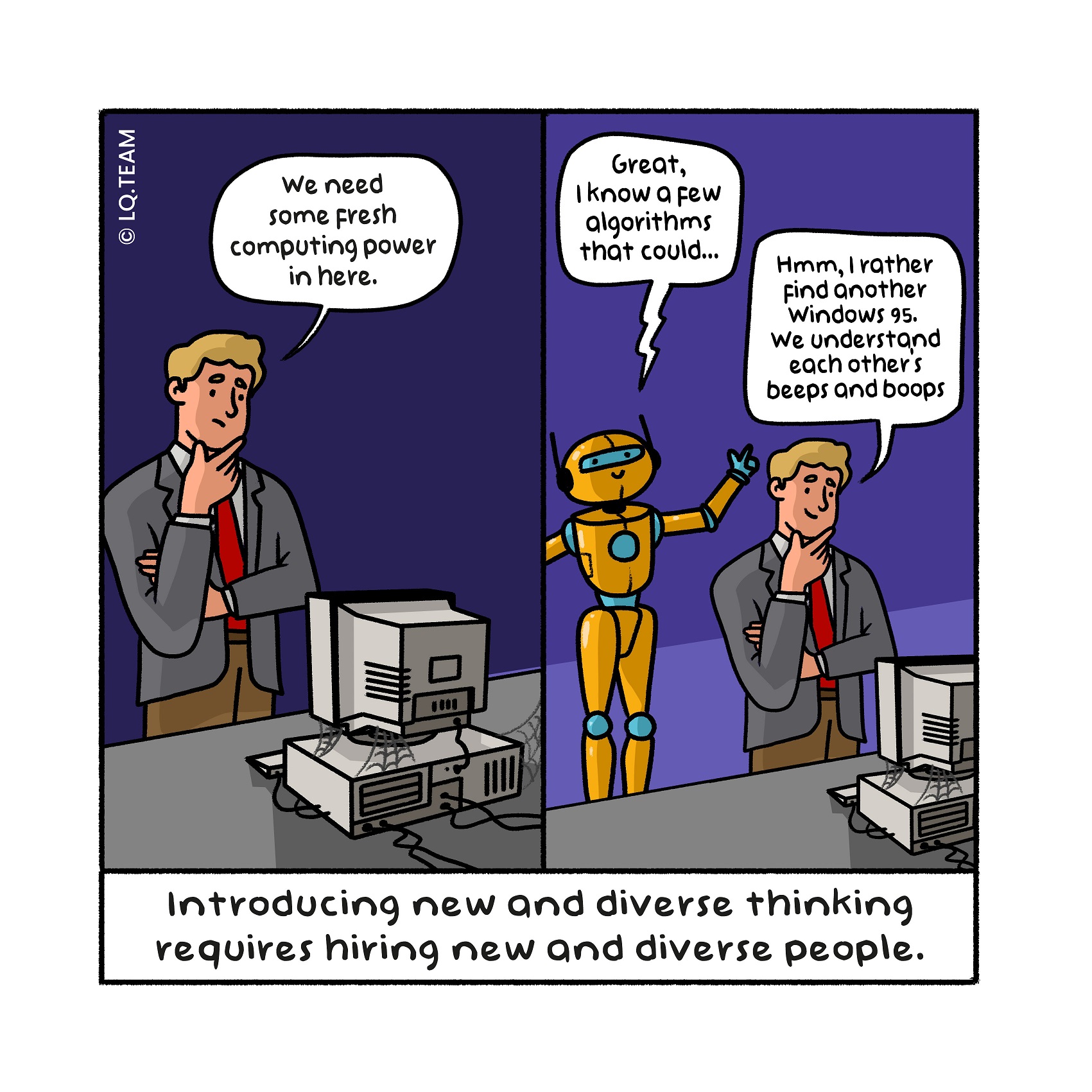
Nut to crack: How do you prevent people with the “old” profile from being hired?
When you implement an organisational change, it usually requires employ- ees to not only have new knowledge and skills, but also a different mindset. Subsequently a vicious circle tends to occur. New talent has to be taken on by people who have been working in the company for a long time and who are not necessarily looking for someone different to them, but more often than not for someone they can relate to. In other words, they look for like-minded people, which means you will not move sufficiently as an organisation. How do you break this circle and “inject” the organisation with “new blood”?
Nutcracker: Change the rules of the hiring game
However much people want to hire for diversity, in practice this proves chal- lenging. Especially in times of transition, it is often necessary to move forward sufficiently as an organisation. Changing the rules of the hiring and selection process can help. The following practical example shows how.
Real life example: Hiring policy turned upside down
A hightech company is moving from a traditional organisational structure to an agile organisation. This requires a new way of working and a new skillset, which are currently barely available in the organisation. The director wonders how to ensure that people who are recruited do possess this knowledge and skillset, together with the correspond ing attitude.
He looks for best practices from companies in Silicon Valley. Google’s peertopeer se lection approach appeals to him. This means that a manager in the organisation no longer has decisionmaking authority to hire employees for their own team, but only has decisionmaking authority for hiring employees for other teams.
Candidates are interviewed during the selection process by future colleagues, future direct reports and their future line manager. After this, a committee of three colleagues is responsible for the final decision about whether the candidate is hired or not.
The committee members rotate once every three to six months, and the future line man ager is not part of this committee. The committee is well informed about the changed requirements in knowledge, skills and mindset, and is less subjective than a direct manager would be. As a result of this approach, the degree of objectivity in the selection process increases.
Tip for change leader
Think carefully about where you “inject” new blood. Often, you see that peertopeer influence is very effective. So when you add two new employees to a team at the same hierarchical level who bring a completely different perspective, different competences and work with a different attitude, this has a knockon effect on everyone else in the team. This way you can visualise as a leader what new role model behaviour looks like in practice. By systematically enriching teams with new talents at peer level, you increase the chance of success of the entire organisational change.
Tip for change enabler
Even if you find the Google selection example too extreme for your organisation, it can help you to consciously redesign the interview process. By deliberately forming interview couples who represent “old” and “new” and giving them equal weight in the decisionmaking, you help to develop a shared picture of the profile that is needed at this moment and at the same time make a selection on the basis of a profile that is suf ficiently compatible to be able to land in the current organisation. If that landing turns out to be difficult, please read Challenge 41.
Kernel: If you stop doing what you did, you will stop getting what you got
When you do what you used to do, you will get what you used to get. This also applies to the recruitment and selection of new talent in times of tran- sition. By redefining the decision-making method in the recruitment and se- lection process, you enable the organisation to actually bring in new talent.
